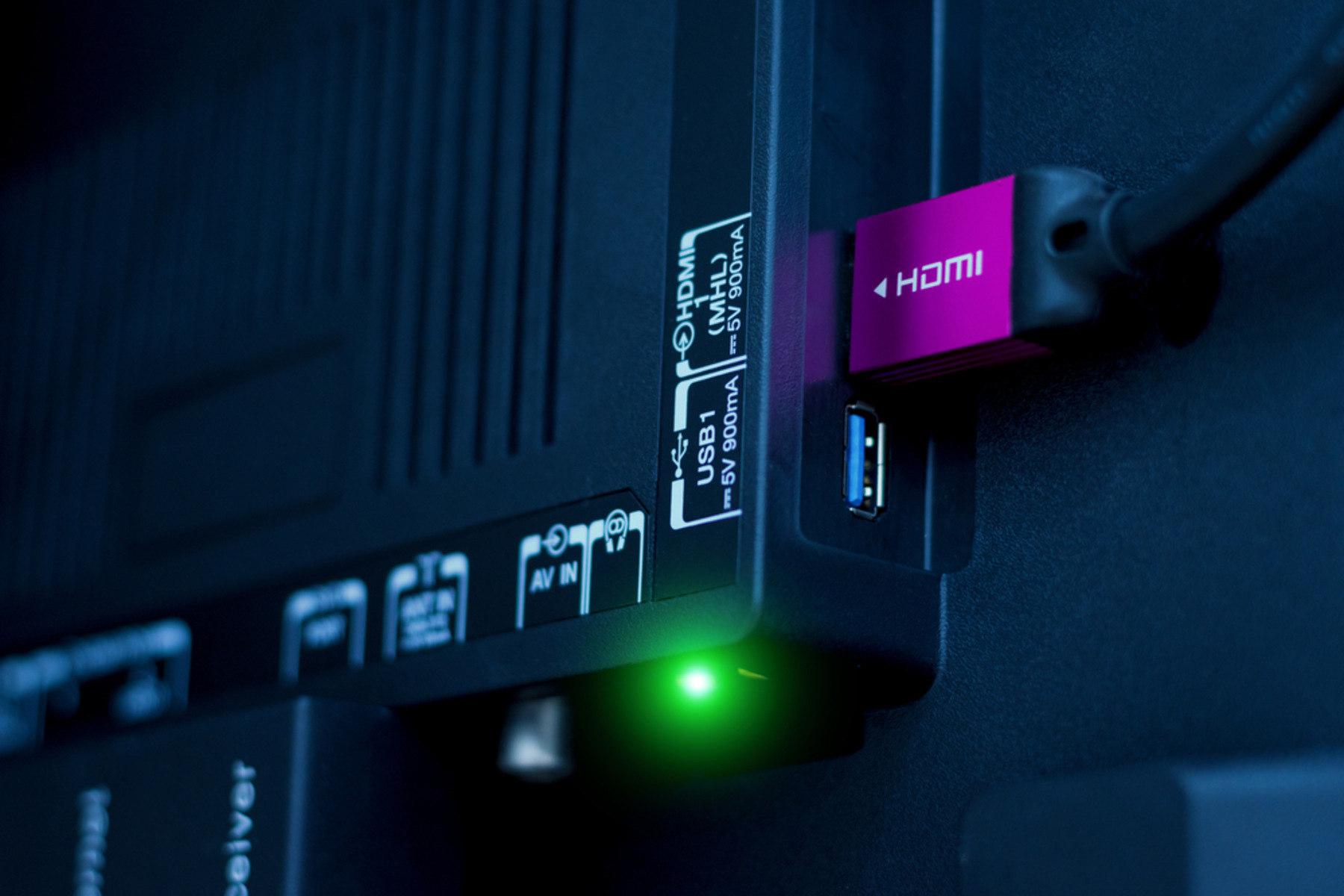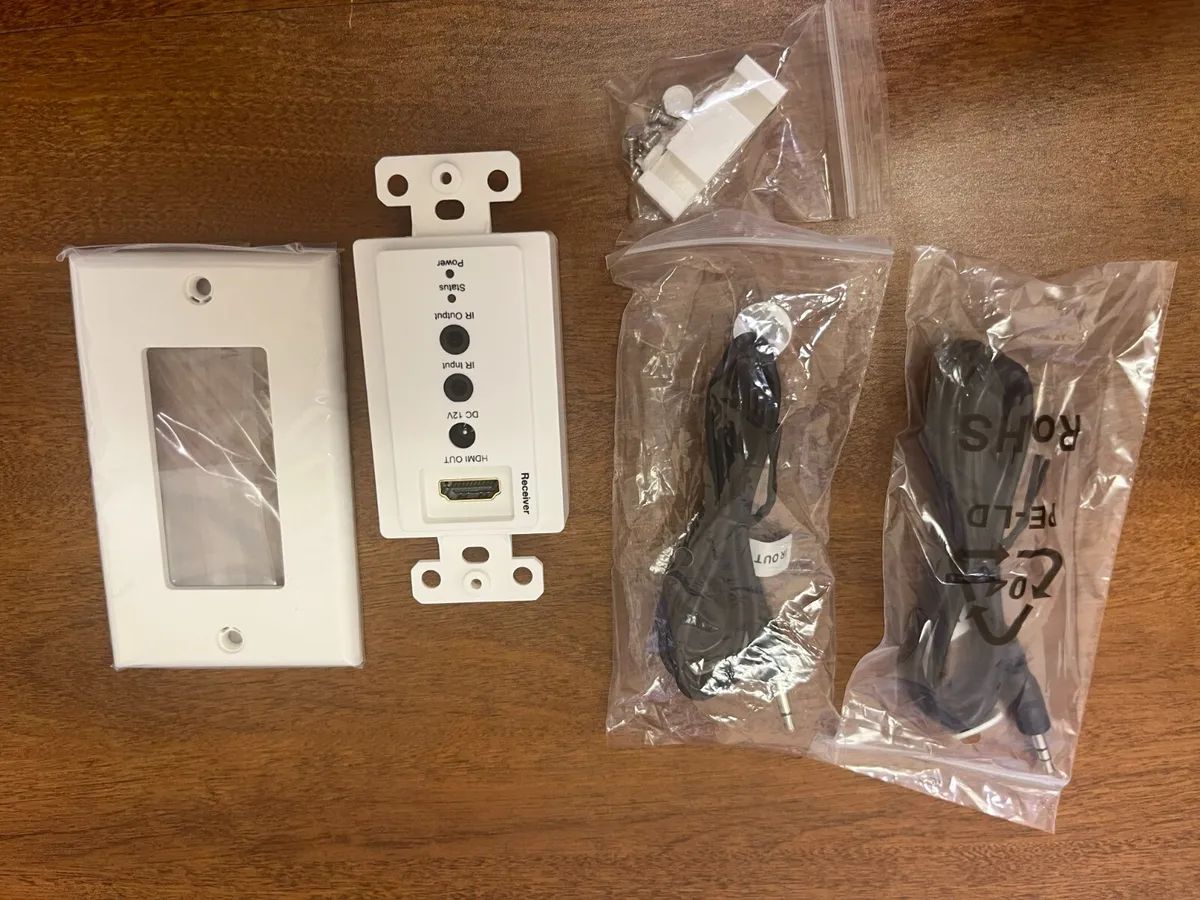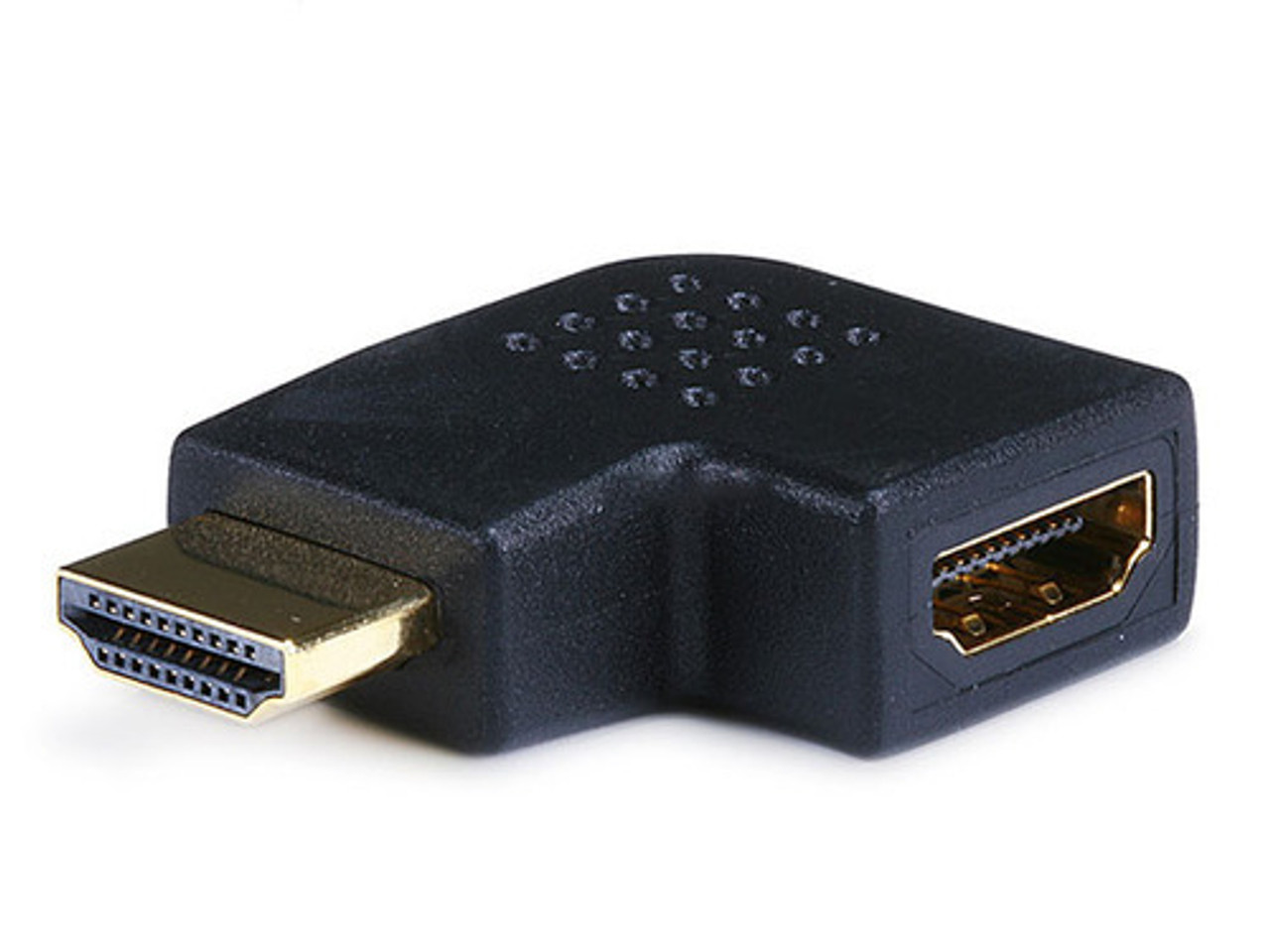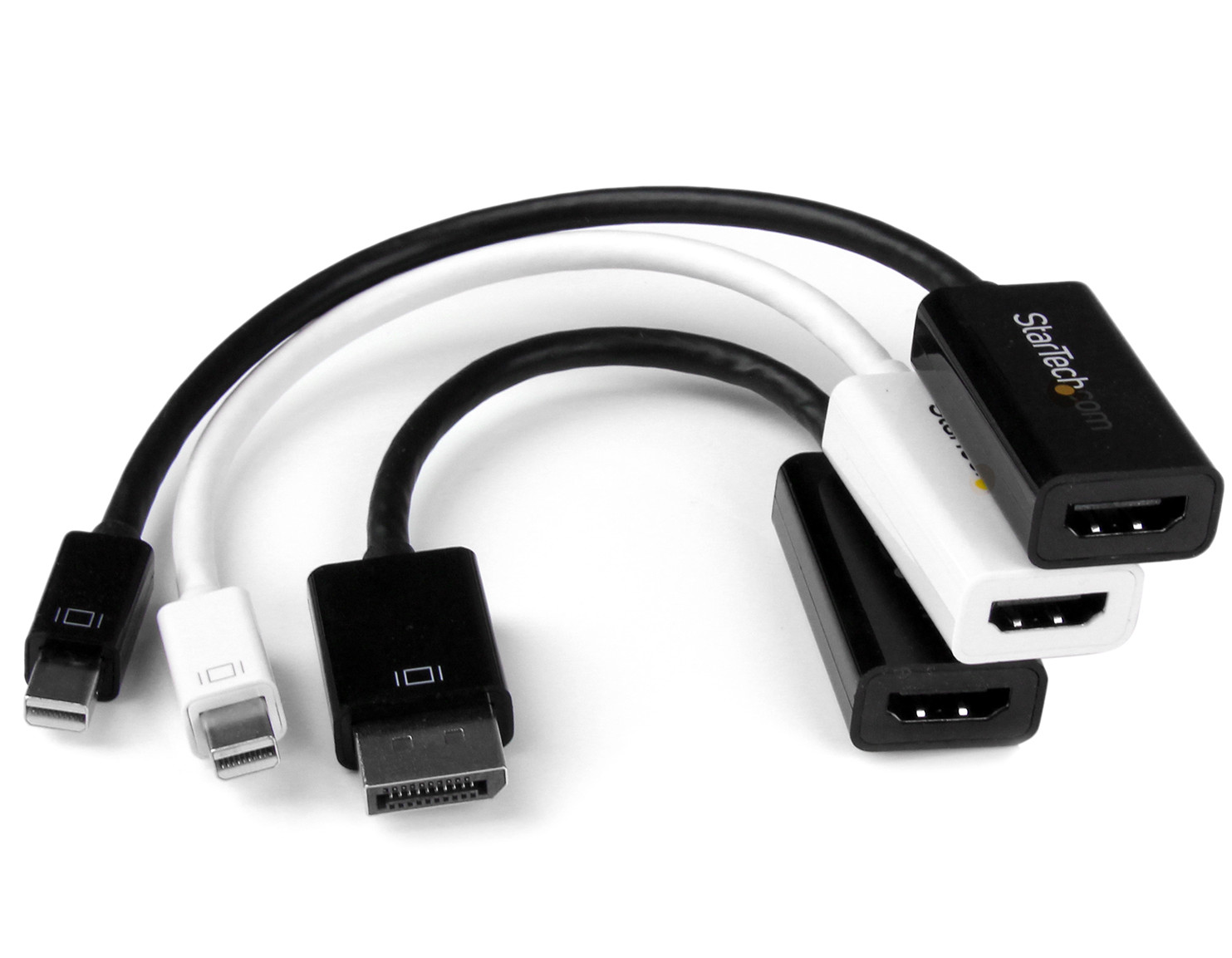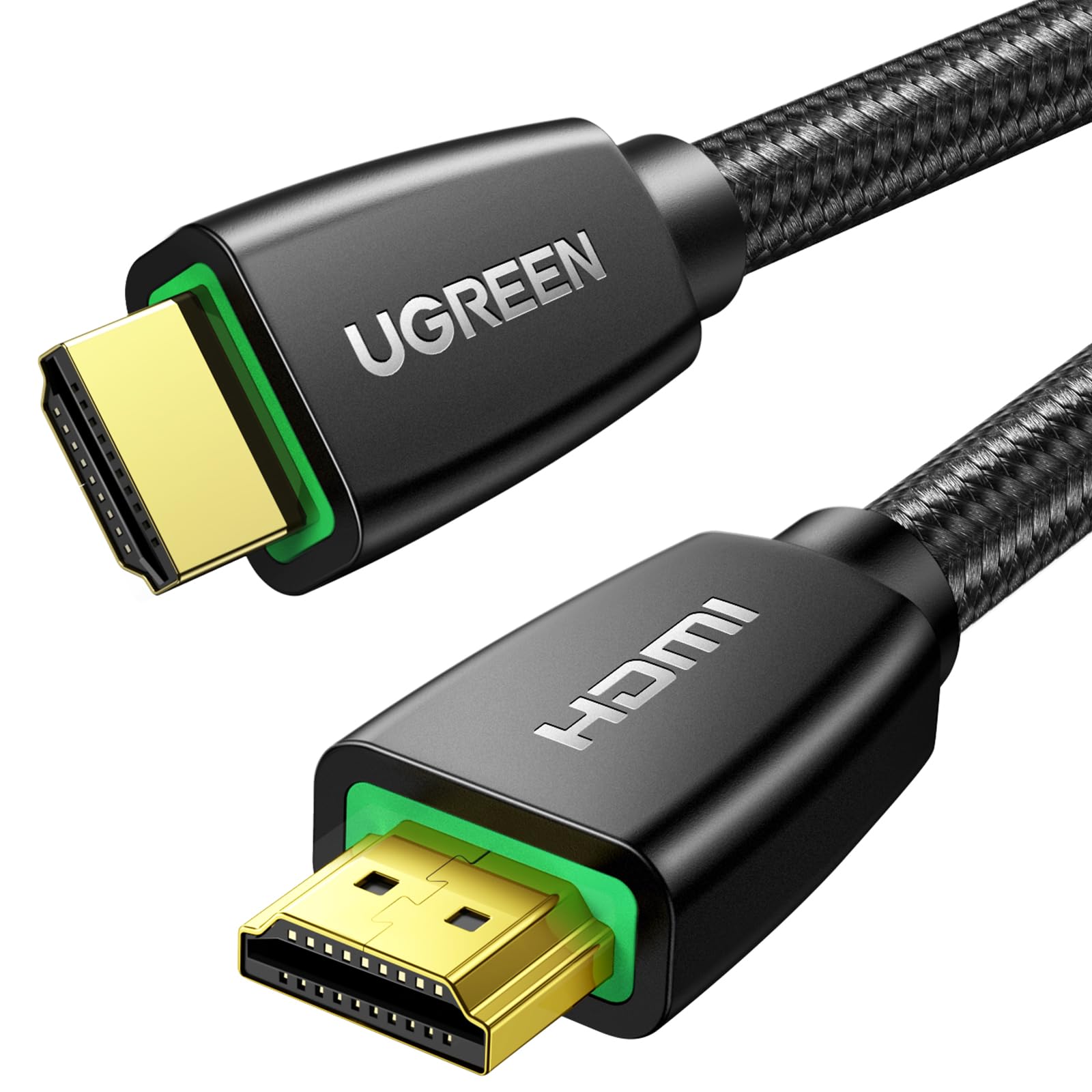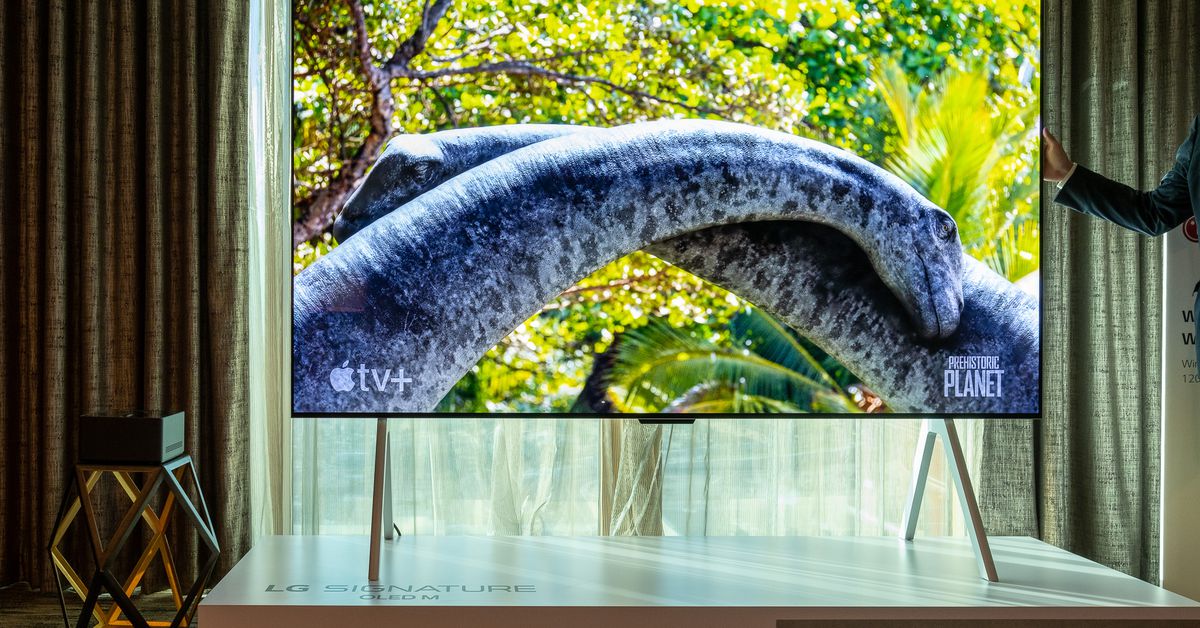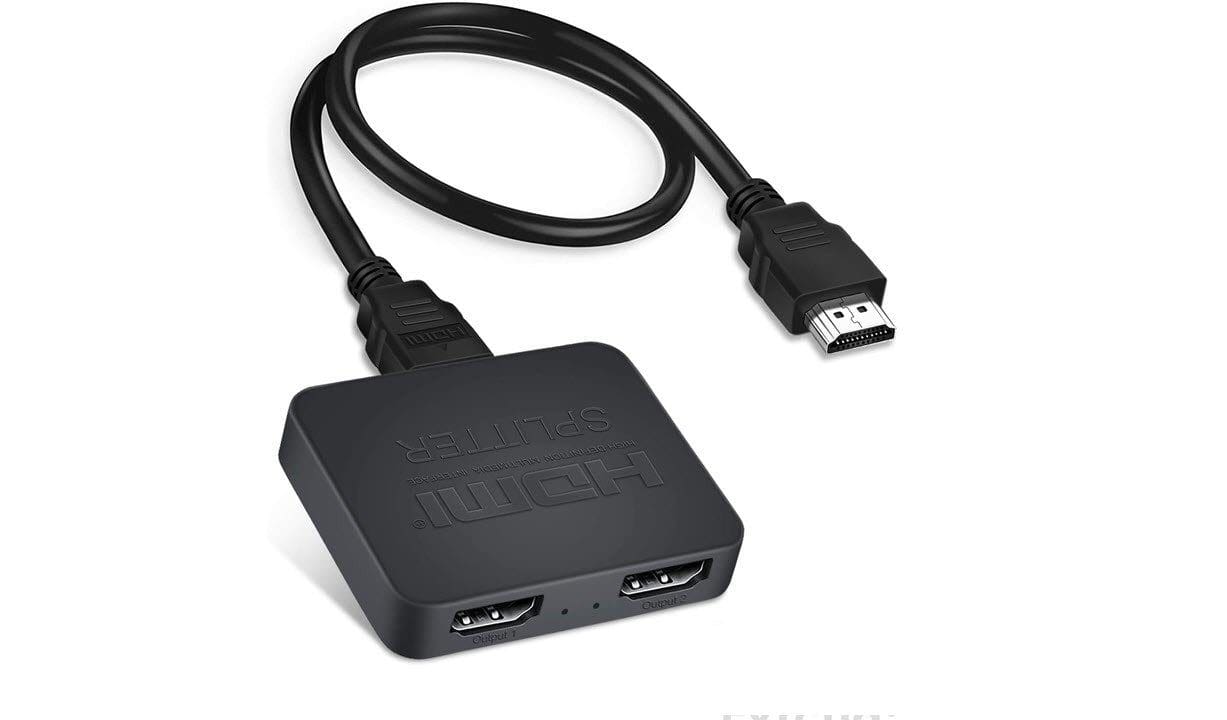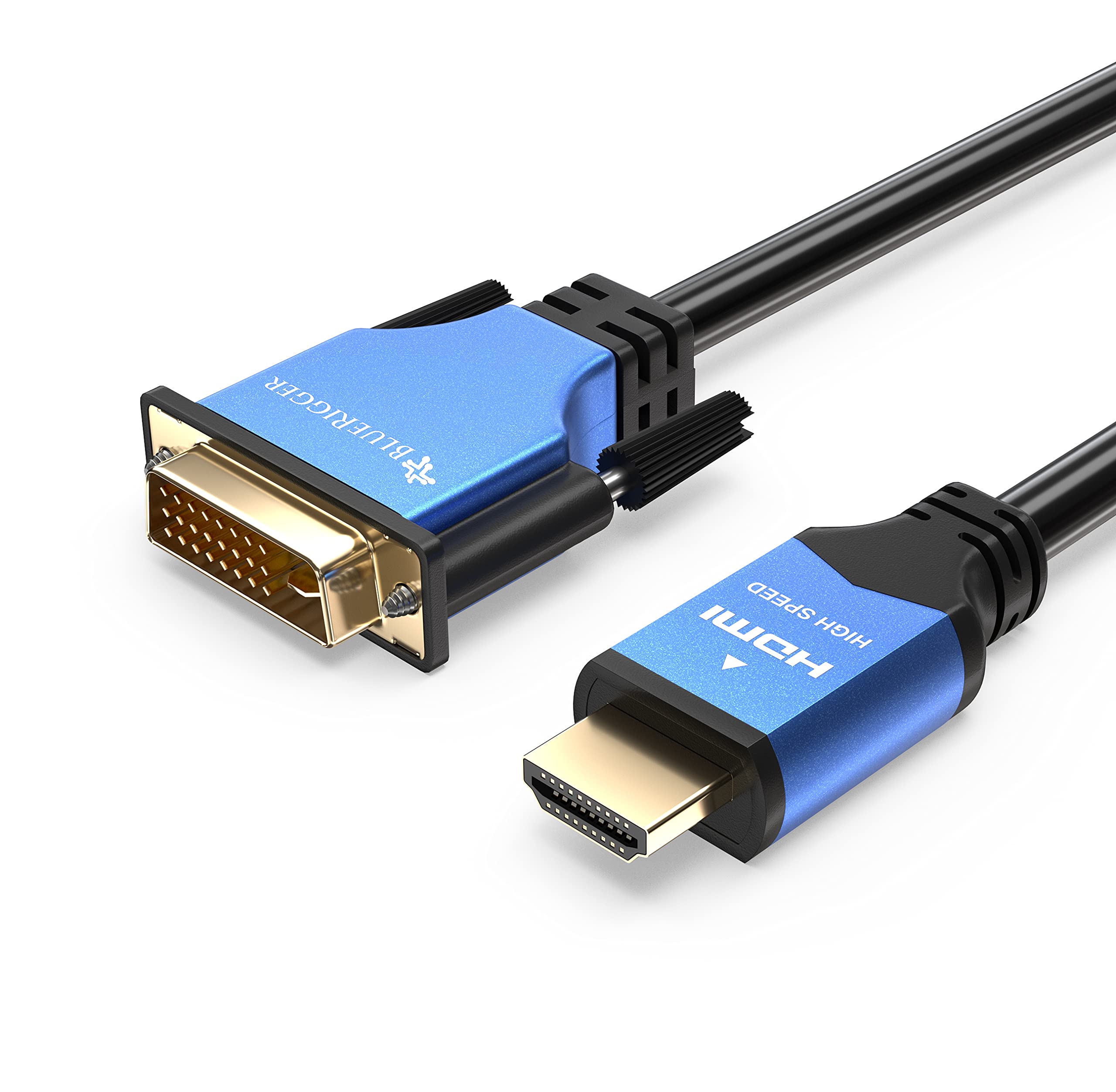Introduction
Welcome to the world of high-definition multimedia! If you’re wondering whether it matters which HDMI port you use on your TV, you’ve come to the right place. HDMI (High-Definition Multimedia Interface) ports are an essential aspect of modern televisions, connecting various devices to deliver stunning audio and video quality.
In this article, we will explore the significance of HDMI ports, understand the different versions and standards, and provide insights into choosing the right HDMI port for your needs. Whether you’re connecting a game console, streaming device, or audio system, understanding HDMI ports will ensure you make the most out of your entertainment setup.
But first, let’s get acquainted with HDMI ports. HDMI ports are small, rectangular interfaces located on the back or side of your TV, usually labeled HDMI 1, HDMI 2, and so on. These ports serve as the bridge between your TV and external devices, facilitating the transmission of audio and video signals in high definition.
Over the years, HDMI technology has evolved, bringing new features and improvements to enhance your viewing experience. HDMI versions, such as HDMI 1.4, HDMI 2.0, and HDMI 2.1, have introduced advanced capabilities like 3D support, 4K resolution, and high frame rates. It’s essential to understand the different HDMI versions and their compatibility with your devices.
Now that we have a basic understanding of HDMI ports, let’s delve into the nuances of each HDMI port on your TV. While most TVs come equipped with multiple HDMI ports, it’s crucial to know the purpose and capabilities of each port to make informed decisions about your device connections.
Additionally, you may have come across terms like HDMI ARC (Audio Return Channel), HDMI eARC (Enhanced Audio Return Channel), and HDMI CEC (Consumer Electronics Control). These features add functionality and convenience to your home theater setup, allowing you to control multiple devices with a single remote and simplify audio connections.
Understanding HDMI port compatibility is also crucial. Not all devices and cables are compatible with newer HDMI versions, and using an incompatible setup may result in degraded performance or limited features. We will provide insights into ensuring optimal compatibility in selecting the HDMI port for your specific devices.
So, whether you’re setting up a new TV, looking to optimize your current setup, or simply want to understand the intricacies of HDMI ports, keep reading to unlock the potential of your entertainment system. Let’s explore the exciting world of HDMI ports and discover the wonders they bring to your home theater experience.
HDMI Port Overview
HDMI ports are an integral part of today’s entertainment systems, allowing you to connect various devices to your TV and enjoy high-definition audio and video. The acronym HDMI stands for High-Definition Multimedia Interface, and it has become the standard interface for transmitting digital audio and video signals.
These ports, typically found on the back or side of your TV, come in different versions and standards. HDMI 1.4, HDMI 2.0, and HDMI 2.1 are among the most common versions, each introducing new features and improvements.
HDMI 1.4, for example, supports 3D content, making it ideal for gaming enthusiasts and those with 3D-enabled displays. HDMI 2.0 brought about the ability to transmit 4K resolution at 60 frames per second, catering to the growing demand for Ultra HD content. The latest version, HDMI 2.1, takes things a step further with support for 8K resolution, high dynamic range (HDR), and Variable Refresh Rate (VRR) technology.
Regardless of the HDMI version, the purpose of an HDMI port remains the same: to enable the transmission of high-quality audio and video signals. These ports use a single cable to carry both digital audio and video, simplifying the connection process and eliminating the need for multiple cables and adapters.
Most TVs today come equipped with multiple HDMI ports, which allow you to connect a variety of devices simultaneously. This means you can connect a Blu-ray player, a gaming console, a streaming device, and more, all to your TV using separate HDMI cables.
When it comes to the physical appearance, HDMI ports are typically rectangular in shape. Each port is labeled, usually as HDMI 1, HDMI 2, HDMI 3, and so on, indicating the specific port’s location on the TV. Some TVs may also have specific HDMI ports marked for special functionality, such as HDMI ARC or HDMI eARC.
Overall, HDMI ports provide a seamless and convenient method of connecting your devices to your TV. They offer exceptional audio and video quality, making your entertainment experience more immersive and enjoyable. Understanding the different HDMI versions, their capabilities, and how to select the appropriate port for your devices will ensure optimal performance and compatibility for your home theater setup.
HDMI Versions and Standards
HDMI technology has continuously evolved over the years, introducing new versions and standards to keep up with the demands of high-definition audio and video. It is important to understand the different HDMI versions and their respective standards to ensure compatibility with your devices.
HDMI 1.4 was a significant milestone, bringing 3D support to the market. This version allowed users to enjoy immersive 3D content, whether from 3D Blu-ray players or gaming consoles. Additionally, HDMI 1.4 introduced an Ethernet channel, enabling internet connectivity through the HDMI cable, which is useful for devices like smart TVs.
HDMI 2.0 built upon the foundation laid by its predecessor and brought support for 4K resolution at higher frame rates. With HDMI 2.0, users could enjoy smooth playback of content shot at 60 frames per second, delivering stunningly lifelike visuals. This version also introduced a wider color gamut, allowing for more vibrant and accurate colors on compatible displays.
The latest HDMI version, HDMI 2.1, offers even more advanced features to cater to the demands of the future. One of the significant improvements is the support for 8K resolution. With the rise of 8K displays, HDMI 2.1 enables viewers to experience an unprecedented level of detail and clarity in their content. HDR (High Dynamic Range) support was also enhanced in this version, providing brighter highlights, deeper blacks, and a broader range of colors for a more visually striking experience.
Another notable feature introduced in HDMI 2.1 is Variable Refresh Rate (VRR) technology. VRR synchronizes the refresh rate of the display with the output of the graphics card or game console, eliminating screen tearing and providing smoother gameplay. This is especially beneficial for gamers who demand a fluid and responsive gaming experience.
In addition to HDMI versions, there are also different HDMI standards to consider. HDMI standards define the capabilities and specifications of a particular HDMI version. For example, within the HDMI 2.0 version, there are different standards like HDMI 2.0a, HDMI 2.0b, and HDMI 2.0b+. These standards may introduce additional features or improvements over the base version, so it’s important to check compatibility and feature support when selecting devices and cables.
Understanding the different HDMI versions and standards is essential when setting up your home theater system. Depending on your requirements and the devices you own, you may need to ensure compatibility with specific HDMI versions. By staying informed about the latest HDMI technology, you can make informed decisions to create a future-proof entertainment setup that delivers the best audio and video experience.
Understanding HDMI Ports on a TV
HDMI ports are the gateway to connecting your external devices to your TV and experiencing high-quality audio and video. It’s essential to understand the different HDMI ports on your TV to make the most out of your entertainment setup.
Most modern TVs come equipped with multiple HDMI ports conveniently located on the back or side panel. These ports are typically labeled HDMI 1, HDMI 2, HDMI 3, and so on, indicating the specific port’s location on the TV.
Each HDMI port on your TV serves as a separate input that you can use to connect devices like gaming consoles, Blu-ray players, streaming devices, and more. The purpose and capabilities of each HDMI port may vary, so it’s important to understand their specific functions.
Some TVs may have dedicated HDMI ports with specific functionality, such as HDMI ARC (Audio Return Channel) or HDMI eARC (Enhanced Audio Return Channel). These ports are designed to simplify the connection of audio devices, such as soundbars or AV receivers, and allow for two-way audio communication between the TV and the connected device.
HDMI ARC (Audio Return Channel) enables the TV to send audio signals back to the connected audio device, eliminating the need for a separate audio connection. This is particularly useful when watching content from the TV’s built-in apps or using the TV as the source for audio playback. It allows you to enjoy audio from the TV through external speakers or a soundbar without the hassle of multiple cables.
HDMI eARC (Enhanced Audio Return Channel) is an improved version of HDMI ARC and offers higher bandwidth and support for advanced audio formats, such as Dolby TrueHD and DTS-HD Master Audio. With HDMI eARC, you can enjoy lossless audio quality and a more immersive audio experience when connected to compatible devices.
Another important feature to consider is HDMI CEC (Consumer Electronics Control). HDMI CEC allows devices connected through HDMI to be controlled using a single remote. For example, when you turn on your TV, HDMI CEC can automatically turn on your AV receiver or switch to the correct input source. This simplifies the overall user experience and reduces the need for multiple remotes.
When selecting the HDMI port on your TV for a specific device, it’s important to consider factors such as picture quality, audio compatibility, and special features. Some HDMI ports on your TV may support higher resolutions, refresh rates, or additional features like HDCP (High-bandwidth Digital Content Protection). Consulting your TV’s manual or specifications will provide insights into these details.
Furthermore, it’s crucial to ensure compatibility between the HDMI version of your devices and the HDMI port on your TV. For example, if you have a 4K Blu-ray player that supports HDMI 2.0, make sure to connect it to an HDMI 2.0 or higher port on your TV to fully utilize the capabilities of the device.
Understanding the various HDMI ports on your TV and their functions allows you to make informed decisions when connecting your devices. Whether you’re aiming for the best picture quality, simplified audio connections, or seamless device control, understanding HDMI ports will help you get the most out of your TV and create a seamless and immersive entertainment experience.
HDMI ARC (Audio Return Channel) Port
The HDMI ARC (Audio Return Channel) port is a feature that simplifies the audio connection between your TV and external audio devices, such as soundbars, AV receivers, or home theater systems. This port allows you to enjoy high-quality audio from your TV through an external audio system without the need for extra cables.
With HDMI ARC, you can send audio signals from your TV to the connected audio device, eliminating the need for a separate audio connection. This is particularly useful when watching content from the TV’s built-in apps or using the TV as the source for audio playback. Instead of relying on the TV’s built-in speakers, you can experience enhanced audio quality and immersive sound with external speakers or a soundbar.
To take advantage of HDMI ARC, both your TV and the connected audio device need to support this feature. Most modern TVs and audio devices have HDMI ARC ports, which are specifically labeled to indicate their functionality. Simply connect an HDMI cable to the HDMI ARC port on your TV and the HDMI ARC port on your audio device to establish the audio connection.
One of the key advantages of HDMI ARC is its ability to carry both audio and video over a single cable. This simplifies the setup process and reduces cable clutter, as you no longer need separate audio cables to connect your TV and external audio devices. It also allows for seamless control of the connected audio device using the TV’s remote control, making it more convenient to adjust volume levels or switch audio sources.
It’s important to note that HDMI ARC supports both two-channel stereo and multichannel audio formats, such as Dolby Digital and DTS. However, it may not support advanced audio formats like Dolby TrueHD or DTS-HD Master Audio, which require higher bandwidth. If you desire lossless audio quality or advanced audio formats, you may need to consider using an HDMI eARC (Enhanced Audio Return Channel) port or a separate audio connection.
When setting up your devices with HDMI ARC, ensure that both your TV and audio device have the HDMI ARC feature enabled in their settings. Typically, this can be found in the audio or HDMI settings menu. Enabling the HDMI ARC feature allows for bidirectional audio communication between the TV and the connected audio device.
It’s worth noting that some TVs may have multiple HDMI ports, but only one of them supports the ARC feature. Check your TV’s manual or specifications to identify the specific HDMI port labeled as HDMI ARC.
In summary, the HDMI ARC port simplifies the audio connection between your TV and external audio devices. It allows you to enjoy high-quality audio from your TV through an external audio system without the need for extra cables. HDMI ARC provides convenience, reduced cable clutter, and seamless control with your TV’s remote, making it an essential feature for enhancing your audio experience.
HDMI eARC (Enhanced Audio Return Channel) Port
The HDMI eARC (Enhanced Audio Return Channel) port is an upgraded version of the HDMI ARC (Audio Return Channel) port, designed to provide a more advanced audio experience for your home theater setup. This feature offers higher bandwidth and improved audio capabilities, allowing for enhanced audio quality and compatibility with advanced audio formats.
eARC is part of the HDMI 2.1 specification and provides a significant leap in audio performance compared to traditional ARC ports. With HDMI eARC, you can enjoy lossless audio formats, such as Dolby TrueHD and DTS-HD Master Audio, which deliver the highest quality sound reproduction with utmost fidelity.
One of the key advantages of HDMI eARC is its increased bandwidth. This allows for the transmission of uncompressed audio signals, resulting in improved clarity, depth, and dynamic range. Additionally, the higher bandwidth of HDMI eARC enables support for object-based audio formats, such as Dolby Atmos and DTS:X, providing a more immersive and three-dimensional audio experience.
Furthermore, HDMI eARC facilitates a broader range of audio formats and audio channel configurations. It can handle up to 32 channels of audio, allowing for greater flexibility in audio setup and accommodating future advancements in audio technology.
Like HDMI ARC, the HDMI eARC port retains the convenience of using a single HDMI cable for both audio and video transmission. This simplifies your setup and reduces cable clutter, as you no longer need multiple audio cables to connect your TV and audio devices.
To take advantage of HDMI eARC, both your TV and the connected audio device need to support this feature. It’s essential to check if your devices are HDMI 2.1 compatible and have the eARC functionality enabled. By connecting an HDMI cable to the HDMI eARC ports on both devices, you can establish an advanced audio connection.
When using HDMI eARC, you can also benefit from improved audio synchronization. The feature ensures that audio and video signals remain perfectly in sync, resulting in a more immersive and enjoyable viewing experience.
It’s worth mentioning that HDMI eARC is backward compatible with HDMI ARC, which means you can still connect a device with HDMI ARC to an HDMI eARC port. However, you may not be able to take full advantage of the enhanced audio capabilities offered by HDMI eARC.
Considering the superior audio performance and compatibility with advanced audio formats, HDMI eARC is especially beneficial for those who seek the highest quality audio experience. It provides a seamless connection between your TV and audio devices, offering improved fidelity, immersive sound, and future-proof audio capabilities.
HDMI CEC (Consumer Electronics Control)
HDMI CEC (Consumer Electronics Control) is a feature that enables control of multiple HDMI-connected devices using a single remote control. It simplifies the operation of your home theater setup by allowing you to control compatible devices without the need for separate remotes.
With HDMI CEC, you can perform various functions, such as turning on or off multiple devices simultaneously, adjusting volume levels, and switching input sources seamlessly. This eliminates the hassle of juggling multiple remotes and streamlines the overall user experience.
One of the key advantages of HDMI CEC is its ability to automatically control devices connected through HDMI. For example, when you turn on your TV, HDMI CEC can send a signal to your AV receiver or soundbar to power on as well. It can also switch the input source of all compatible devices, ensuring that you’re immediately ready to enjoy your desired content without manually switching inputs.
Another useful feature of HDMI CEC is the ability to control basic playback functions. Using the remote control of your TV, you can pause, play, stop, and navigate through menus on compatible devices, such as Blu-ray players or streaming devices. This makes it more convenient to control your entire home theater system from a single remote.
To use HDMI CEC, ensure that all connected devices support this feature. Although HDMI CEC is a standard feature, it may have different names depending on the manufacturer. For example, Samsung calls it Anynet+, Sony refers to it as BRAVIA Sync, and LG uses the term SimpLink. Consult the user manuals or specifications of your devices to identify the HDMI CEC feature and its corresponding name.
It’s important to note that HDMI CEC may not work seamlessly across all devices. Sometimes, there can be compatibility issues or variations in implementation between different manufacturers. In such cases, certain functions may not work as expected, or you may need to adjust settings on individual devices to ensure proper operation.
It’s also worth mentioning that the HDMI CEC feature can be enabled or disabled within the settings menu of your TV or individual devices. If you encounter issues or prefer to use separate remotes for certain devices, you can easily disable HDMI CEC functionality.
HDMI CEC simplifies the operation of your home theater system by providing a unified control solution. It eliminates the need for multiple remotes, streamlines device control, and enhances the overall user experience. With HDMI CEC, managing your HDMI-connected devices becomes more convenient and enjoyable, leaving you more time to immerse yourself in your favorite movies, shows, and games.
HDMI Port Compatibility
When it comes to HDMI ports, ensuring compatibility between devices is crucial for optimal performance. Not all devices and cables are compatible with every HDMI version, and using an incompatible setup can result in degraded picture quality, limited features, or even no connection at all.
Compatibility primarily revolves around the HDMI versions of both the TV and the connected device. Each HDMI version introduces new features, higher resolutions, and increased bandwidth. Therefore, it’s important to confirm that the HDMI version supported by your TV aligns with the HDMI version required by your external device.
For instance, if you have a Blu-ray player that supports HDMI 2.0, it’s recommended to connect it to an HDMI 2.0 or higher port on your TV. This ensures compatibility and allows you to take full advantage of the device’s features, such as 4K resolution or High Dynamic Range (HDR) playback.
In addition to HDMI version compatibility, it’s crucial to consider other factors that may affect the connection. One such factor is HDCP (High-bandwidth Digital Content Protection) compatibility. HDCP is a form of digital copy protection used to prevent unauthorized copying of copyrighted content. If your source device, such as a Blu-ray player or gaming console, requires HDCP support, it’s essential to ensure that the HDMI port on your TV also supports HDCP. Failure to do so may result in the inability to view certain content or the display showing a “HDCP Error” message.
Another aspect to consider is the quality of the HDMI cables used in your setup. While HDMI cables are generally compatible across different versions, higher-quality cables may offer better performance and longevity. When purchasing HDMI cables, it’s recommended to opt for cables labeled as “High-Speed HDMI” or “Premium High-Speed HDMI,” as they are designed to support the higher bandwidth requirements of advanced HDMI versions.
It’s also worth noting that HDMI ARC (Audio Return Channel) and HDMI eARC (Enhanced Audio Return Channel) ports require compatibility and mutual support between the TV and audio device. Both devices need to be equipped with the respective ARC or eARC features to establish the audio connection. If either device lacks ARC or eARC support, the audio connection may not function as intended.
Lastly, even if all devices and cables are technically compatible, it’s always a good practice to consult the user manuals or contact the manufacturers for specific compatibility information. This ensures a seamless and trouble-free setup, allowing you to fully enjoy the capabilities of your devices without any compatibility limitations.
In summary, HDMI port compatibility is a critical aspect when connecting devices. Pay attention to the HDMI version supported by your TV and external devices, as well as factors like HDCP compatibility and the quality of HDMI cables. By ensuring compatibility, you can create a reliable and high-performing audio and video setup that delivers the best possible viewing and listening experience.
Factors to Consider When Choosing an HDMI Port
When selecting an HDMI port on your TV for your specific device, there are several factors worth considering to ensure optimal performance and compatibility. By taking these factors into account, you can make informed decisions and enhance your overall viewing and audio experience.
1. HDMI Version: Check the HDMI version supported by both your TV and the device you are connecting. If you have a device that supports a higher HDMI version, such as HDMI 2.1, it’s recommended to connect it to an HDMI port that supports that version or higher. This ensures compatibility and allows you to take advantage of the latest features and improvements offered by the HDMI version.
2. Resolution and Refresh Rate: Consider the resolution and refresh rate capabilities of both your TV and the connected device. If you have a device that offers 4K resolution or higher refresh rates, ensure that the HDMI port on your TV can support those specifications. This ensures that you can enjoy your content at the desired resolution and smoothness.
3. HDCP Compatibility: High-bandwidth Digital Content Protection (HDCP) is important for ensuring the secure transmission of copyrighted content. If your device requires HDCP support, make sure the HDMI port on your TV also supports HDCP. This avoids potential issues or restrictions when trying to watch certain protected content.
4. ARC and eARC Functionality: If you plan to connect audio devices like soundbars, AV receivers, or home theater systems, consider the availability of HDMI ARC or eARC ports on both your TV and the audio device. ARC allows for sending audio signals from your TV to the connected audio device through the HDMI cable, while eARC offers enhanced audio capabilities. Ensuring compatibility with ARC or eARC functionality enables a streamlined audio setup and simplifies controlling audio devices using your TV’s remote control.
5. Number of Ports: Take into account the number of HDMI ports available on your TV. If you have multiple devices to connect, make sure your TV has enough ports to accommodate them. Consider the types of devices you want to connect and prioritize based on usage frequency or importance.
6. Specific Port Features: Some TVs have specific HDMI ports marked for certain features or functions. For example, a port labeled “Gaming” may have lower input lag for better gaming performance, or a port labeled “MHL” may support Mobile High-Definition Link for connecting compatible mobile devices. Understanding these specific port features can help you determine the best port for your intended use.
7. Cable Quality: While HDMI cables are generally compatible across versions, using high-quality HDMI cables can ensure optimal performance and longevity of your setup. Look for cables labeled as “High-Speed HDMI” or “Premium High-Speed HDMI” to support higher bandwidth requirements and maintain signal integrity.
When making your decision, consult the user manuals, specifications, or websites of your devices for specific compatibility information. Additionally, reach out to manufacturers if you have any specific questions or concerns about compatibility.
Considering these factors when choosing an HDMI port ensures that your devices work together seamlessly, delivering the best possible audio and video performance for an enhanced entertainment experience.
Popular HDMI Devices and Recommended Ports
There are a multitude of devices that utilize HDMI connectivity to deliver high-quality audio and video experiences. Here are some popular HDMI devices and recommendations on which HDMI ports to use for optimal performance:
1. Gaming Consoles: Gaming consoles, such as the PlayStation and Xbox series, are commonly connected to TVs for immersive gaming experiences. To ensure low input lag and the best gaming performance, it is recommended to connect gaming consoles to HDMI ports labeled “Gaming” or “Game Mode.” These ports usually have reduced input lag and may offer specific optimizations for gaming.
2. Blu-ray Players: Blu-ray players provide high-definition video and audio playback. For the best picture and sound quality, it is advisable to connect Blu-ray players to HDMI ports that support the highest resolution and audio capabilities of your TV. Look for HDMI ports with specifications matching your Blu-ray player’s capabilities, such as HDMI 2.0 or HDMI 2.1 with support for 4K resolution and advanced audio formats.
3. Streaming Devices: Popular streaming devices like Apple TV, Roku, or Amazon Fire TV Stick are ideal for accessing various streaming platforms. HDMI ports with support for the necessary video and audio resolutions, as well as HDCP compatibility, are recommended for seamless streaming experiences. Checking the specifications of both the streaming device and the TV will guide you in selecting the appropriate HDMI port.
4. Soundbars and AV Receivers: Soundbars and AV receivers enhance the audio experience of your TV by delivering immersive sound. Connect these audio devices to a TV’s HDMI ARC or eARC port to leverage the benefits of simplified audio connectivity and control. HDMI ARC ports allow for two-way audio communication, while HDMI eARC offers enhanced audio capabilities with support for advanced audio formats and higher bandwidth.
5. Media Streaming Sticks: Media streaming sticks like Chromecast or Roku Streaming Stick are compact devices that plug directly into your TV’s HDMI port. They offer easy streaming of content from various platforms. Simply connect these streaming sticks to any available HDMI port on your TV for a hassle-free streaming experience.
6. Cable or Satellite Boxes: Cable or satellite boxes provide access to live TV channels. Connecting these devices to any HDMI port on your TV is generally sufficient for most setups. Ensure that your chosen HDMI port supports the necessary video resolution and audio output capabilities of your cable or satellite box for optimal viewing experiences.
7. Digital Media Players: Digital media players, such as the Apple TV, Roku Ultra, or NVIDIA Shield, allow you to stream movies, shows, and music from online services. These devices often support high-resolution video and advanced audio formats. Choose HDMI ports that align with the supported resolutions and audio capabilities of your digital media player for the best media streaming experience.
Remember to consult the user manuals and specifications of your devices to ensure compatibility and identify specific features or ports recommended by the manufacturers. By connecting your HDMI devices to the appropriate ports on your TV, you can unlock their full potential and enjoy an immersive audiovisual experience.
Conclusion
HDMI ports are vital components of modern television setups, enabling the transmission of high-quality audio and video signals between devices. Understanding HDMI ports and their functionalities is essential for optimizing your entertainment experience.
We explored the basics of HDMI ports, the different HDMI versions, and the importance of compatibility with your devices. Each HDMI version brings advancements like higher resolutions, increased frame rates, and improved audio capabilities. By ensuring that your devices support matching HDMI versions, you can enjoy the latest features and maximize the potential of your devices.
Furthermore, we discussed specific HDMI ports like HDMI ARC and HDMI eARC, which simplify audio connectivity and control between your TV and audio devices. These ports eliminate the need for additional audio cables, provide enhanced audio formats, and streamline your home theater experience.
HDMI CEC, another important feature, allows you to control multiple HDMI devices using a single remote control, reducing clutter and improving convenience.
When choosing an HDMI port, it is crucial to consider factors such as HDMI version compatibility, resolution support, HDCP compatibility, specific port features, and cable quality. These factors ensure optimal performance, seamless device connections, and the best audio and video playback quality.
Moreover, we highlighted popular HDMI devices and recommended ports for connecting them, be it gaming consoles, Blu-ray players, streaming devices, soundbars, or media streaming sticks. Understanding the compatibility requirements for these devices enhances your setup and ensures a smooth viewing and listening experience.
In conclusion, understanding HDMI ports and selecting the appropriate port for each device is vital for maximizing performance and compatibility in your home entertainment system. By considering HDMI versions, port functionalities, and connection factors, you can create a setup that harnesses the full potential of your devices, delivering stunning visuals, immersive sound, and a seamless entertainment experience.







